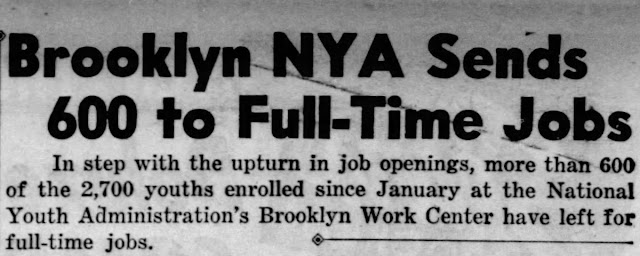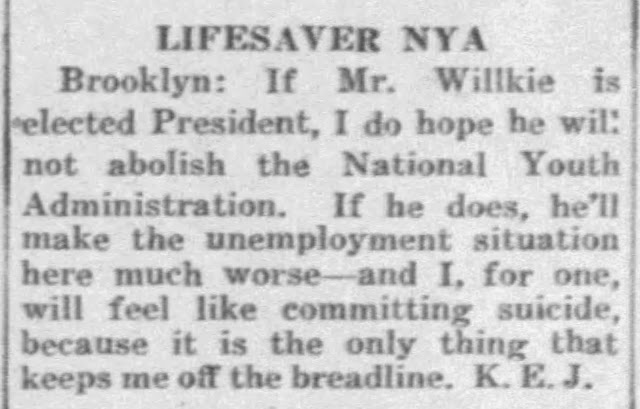
Above: The caption for this photo reads, "Marionette from Hansel and Gretel made by Henrietta Tietjen under supervision of Ralph Chesse in 1936 at Settlement House, San Francisco. Courtesy Henrietta Tietjen." This photo comes from: Michael R. Malkin, "W.P.A. Puppets," The Antiques Journal, March 1976, pp. 26-28 and 48. Image scanned from a personal copy of the magazine, and used here for educational and non-commercial purposes.
 Above:
Above: A WPA poster, promoting a 1937 Federal Theatre production of
The Emperor Jones, at Columbia Theatre, 135 O'Farrell Street, San Francisco, "with Ralph Chesse's Marionettes."
Image courtesy of the Library of Congress.
 Above:
Above: The caption for this photo, taken in San Francisco, ca. 1937, reads: "Marionettes - Emperor Jones - Title: Emperor Jones vision in the forest. Fed. Theatre Proj."
Photo courtesy of the National Archives.
 Above:
Above: Ralph Chesse in 1968.
Unknown photographer, from the Oakland Tribune, May 12, 1968, courtesy of newspapers.com, used here for educational and non-commercial purposes.
The wonderful world of Ralph Chesse
Ralph Chesse was born in New Orleans in 1899 or 1900, but lived most of his life in Berkeley, California (from about 1926 to 1983). He had a long and successful career in puppeteering and theater, and created other types of art as well. During the New Deal, for example, he was one of several artists who painted murals in Coit Tower (playground scene, second floor).
Shortly after painting the mural in Coit Tower, Chesse was put in charge of California's WPA puppet program. In San Francisco theaters, he oversaw many Federal Theatre marionette productions, including: The Emperor Jones, Alice in Wonderland, The Crock of Gold, Hansel and Gretel, and The Mikado.
After his stint in the WPA, Chesse worked on many projects, including the television puppet show,
The Wonderful World of Brother Buzz, a long-running program designed to teach children to be kind to animals (see a summary and video clip at "
Brother Buzz TV Series," Vimeo, Latham Foundation).
In 1983, from his living room in Berkeley, Chesse remembered the New Deal: "It was a great experiment for everyone, an opportunity. But the sad thing about the whole project and the WPA... was that the government was not interested in establishing a national art - only in putting unemployed artists to work. Once the problem (of unemployment) was solved, the projects were cut off... I had definitely set my mind on having a space in Coit Tower. Everyone was clamoring for space... I'm so glad I lived in a period in which I could relate to what's going on. I can't say the same about the last 25 or 30 years [1950s to 1980s]. But I go on my merry way and amuse myself" ("Coit artists still creating after 50 years," Oakland Tribune, October 5, 1983, pp. D1 and D3).
Ralph Chesse died in Oregon in 1991, "survived by two sons, a daughter, five grandchildren and eight great-grandchildren" ("Ralph Chesse, S.F. marionette virtuoso, dies," The San Francisco Examiner, March 20, 1991, p. 15).
 Above:
Above: The description for this photo reads: "Fed. Theatre Proj. San Francisco - Calif. Marionette Production - 'The Crock of Gold' The Philosophers' Cottage."
Photo courtesy of the National Archives.
 Above:
Above: An advertisement for Ralph Chesse's
The Mikado, from
The San Francisco Examiner, November 3, 1936. p. 17.
Image from newspapers.com, used here for educational and non-commercial purposes.
 Above:
Above: Children enjoying
The Wizard of Oz, a traveling puppet show in San Francisco, ca. 1936-1939.
Photo courtesy of the National Archives.
"The next day [in San Francisco]... We had a run through of Ralph Chesse's marionette shows, Alice in Wonderland, Twelfth Night, and The Emperor Jones. Not since shadow plays in Sicily or Athens have I seen such humor as in the Dormouse, the White Knight, and the twitching of Malvolio's mustachios."
--Hallie Flanagan, Director of the WPA's Federal Theatre Project, in her book Arena (New York: Duell, Sloan and Pearce, 1940, p. 280).


















































